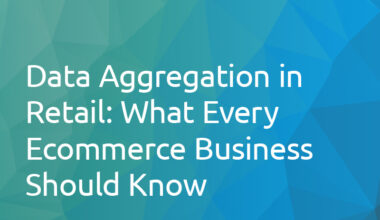Ecommerce has surged forward at a breakneck pace, transforming the retail landscape and consumer behavior in unprecedented ways. Behind the scenes of digital storefronts and innovative shopping experiences lies a critical component: data. As we peer into the future of ecommerce, the role of data classification becomes increasingly central. This article dives deep into the evolving relationship between ecommerce and data classification, exploring its significance in shaping the industry’s trajectory.
Understanding Data Classification in Ecommerce
Data classification involves systematically categorizing data into distinct types or classes, making it easier to manage, process, and utilize. In the realm of ecommerce, data classification can span a wide range, from product categorization to customer segmentation and transaction tagging.
Why Data Classification Matters in Ecommerce
1. Personalized Shopping Experience: Classifying data effectively allows for the creation of tailored shopping experiences. Knowing customer preferences, past purchases, and browsing habits, businesses can offer targeted product recommendations.
2. Enhanced Search Functionality: Accurate product data classification ensures that search results are more relevant, making product discovery faster and more intuitive.
3. Strategic Marketing and Promotions: By classifying customer data, retailers can design specific marketing campaigns for different segments, increasing conversion rates.
Data Classification: Looking Ahead
– AI and Machine Learning Integration: The power of artificial intelligence and machine learning will take data classification to new heights, enabling real-time data processing and dynamic classification adjustments based on evolving patterns.
– Voice Search Optimization: As voice-activated shopping becomes more common, effective data classification ensures that voice search algorithms can quickly and accurately retrieve the desired products.
– Augmented Reality (AR) & Virtual Reality (VR) Shopping: For these immersive shopping experiences to function seamlessly, products and spatial data must be meticulously classified.
Challenges and Considerations
1. Data Privacy and Security: With increased data collection and classification comes the responsibility of safeguarding sensitive customer information.
2. Continuous Evolution of Data Categories: As markets evolve and new products emerge, classification systems will need regular updates.
3. Integration with Existing Systems: Merging new data classification systems with older ecommerce infrastructure can pose technical challenges.
The Broader Impact on Ecommerce Operations
Effective data classification will also revolutionize backend operations:
– Inventory Management: With well-classified product data, inventory management becomes more efficient, minimizing stockouts and overstock situations.
– Pricing Strategies: By classifying products and analyzing competitors in similar categories, businesses can dynamically adjust prices to remain competitive.
– Customer Service Enhancement: Classification of customer queries, feedback, and reviews enables faster response times and more tailored solutions.
The nexus between data classification and ecommerce is set to redefine how businesses operate and how consumers shop. As the digital marketplace becomes more sophisticated, so too will the techniques to harness and interpret the vast amounts of data it generates. For ecommerce businesses, staying ahead means embracing and investing in data classification, unlocking its potential to craft an agile, responsive, and personalized shopping realm. The future of ecommerce is not just about products; it’s about understanding, interpreting, and acting on data in ways that were once the realm of science fiction.
Learn more about ecommerce product data classification here.
 1.416.619.5349 Ext.325
1.416.619.5349 Ext.325 







